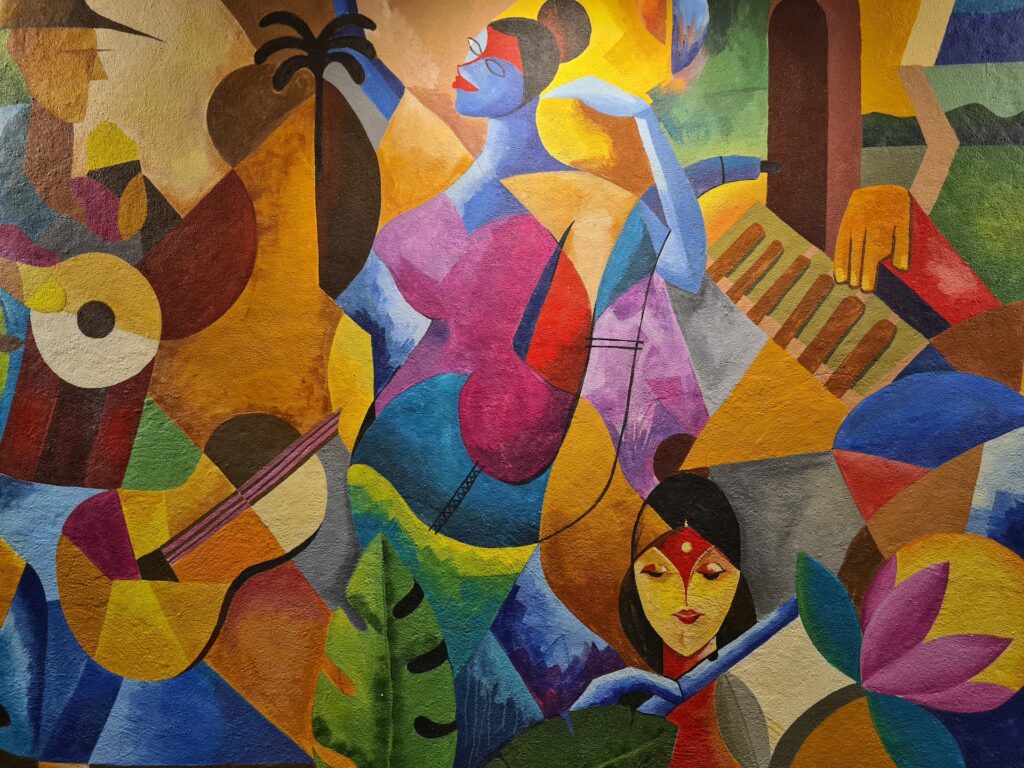Exploring the Enigma of Abstract Art: A Journey Beyond Boundaries

Abstract art, a captivating and often mystifying genre, has been a source of fascination and controversy since its emergence in the early 20th century. Characterized by the absence of recognizable figures and a departure from representational imagery, abstract art challenges traditional notions of artistic expression. This form of artistic representation delves into the realms of emotions, ideas, and the subconscious, encouraging viewers to engage in a subjective and personal interpretation of the artwork.
The Birth of Abstraction
The roots of abstract art can be traced back to the groundbreaking work of artists such as Wassily Kandinsky, Kazimir Malevich, and Piet Mondrian during the early 20th century. Kandinsky, often considered the pioneer of abstract art, believed that colors and shapes could evoke emotional responses independent of any external references. His iconic painting “Composition VII” (1913) is a testament to this radical departure from representation.
Kazimir Malevich took abstraction to another level with his creation of suprematism, a movement characterized by simple geometric shapes and a focus on pure artistic expression. Malevich’s “Black Square” (1915) stands as a symbol of the rejection of figurative art in favor of a non-representational, transcendent language of forms.
Piet Mondrian, a Dutch artist and co-founder of the De Stijl movement, introduced neoplasticism, emphasizing a strict use of geometric shapes, primary colors, and a grid structure. Mondrian’s “Composition with Red, Blue, and Yellow” (1930) embodies the principles of neoplasticism, epitomizing the artist’s quest for a universal visual language.
The Power of Abstraction
Abstract art is not confined to a single style or technique; rather, it encompasses a vast array of approaches, including abstract expressionism, geometric abstraction, and minimalism. Artists like Jackson Pollock, a key figure in abstract expressionism, revolutionized the art world with his innovative “drip painting” technique. His work, such as “Number 1A, 1948,” conveys a raw emotional intensity and spontaneity.
Geometric abstraction, as seen in the works of artists like Ellsworth Kelly and Frank Stella, relies on precise shapes and lines to create harmonious compositions. Kelly’s “Spectrum I” (1953) and Stella’s “Die Fahne Hoch!” (1959) showcase the beauty and simplicity achievable through geometric abstraction.
Minimalism, an art movement that emerged in the 1960s, sought to strip away excess and reduce art to its essential elements. Artists like Donald Judd and Agnes Martin embraced simplicity and repetition in their works, challenging viewers to appreciate the inherent beauty in basic forms and color.
Interpreting the Unseen
One of the unique aspects of abstract art is the freedom it grants viewers to interpret and connect with the artwork on a personal level. Without the constraints of recognizable subjects, abstract art invites individuals to explore their own emotions, memories, and perceptions. The viewer becomes an active participant in the creation of meaning, engaging in a dialogue with the artwork that transcends conventional boundaries.
Critics of abstract art often find themselves grappling with the apparent lack of a clear narrative or recognizable subject matter. However, it is precisely this ambiguity that allows abstract art to resonate with a diverse audience. Each viewer brings their own experiences, emotions, and perspectives to the artwork, making the interpretative process an inherently subjective and intimate experience.
Conclusion
Abstract art, with its rich history and diverse manifestations, continues to captivate and challenge audiences worldwide. From the bold experimentation of the early pioneers to the varied expressions of contemporary artists, abstract art remains a powerful medium for exploring the intangible aspects of human experience. As viewers navigate the enigmatic landscapes of abstract art, they embark on a journey beyond the confines of representation, embracing the boundless possibilities of the imagination. In the ever-evolving world of art, abstract expression stands as a testament to the limitless potential of the human creative spirit.
Listings Related to the Article: Exploring the Enigma of Abstract Art: A Journey Beyond Boundaries
Art Kitchen Direct for Chicago Builders and Developers
Kinzini serves as the preferred destination for comprehensive kitchen services customized for builders and developers in Chicago. Employing a meticulous approach from inception to completion, the company specializes in the creation of outstanding kitchens, vanities, and closets that exceed industry benchmarks.
- Category
- Home and Family » Home Improvement
Pitchfork
Pitchfork is a reputable online music magazine covering a wide range of genres. It provides reviews, features, and news about the latest albums, tracks, and emerging artists. Pitchfork has established itself as a go-to source for music enthusiasts looking for insightful and in-depth commentary on the music industry.
- Category
- Arts and Entertainment » Music
More Articles Like: Exploring the Enigma of Abstract Art: A Journey Beyond Boundaries
Unveiling the Power of Open Source Intelligence
In an age where information is ubiquitous and data flows ceaselessly through the digital landscape, the concept of Open Source Intelligence (OSINT) has emerged as a vital tool for understanding the world around us. OSINT represents a paradigm shift in intelligence gathering, leveraging publicly available sources to generate insights and support decision-making processes across various […]
Navigating the Future: The Profound Impact of Artificial Intelligence on Society
In recent years, the rapid advancement of technology has ushered in a new era dominated by Artificial Intelligence (AI). This transformative force is reshaping the way we live, work, and interact with the world around us. As we stand at the cusp of a technological revolution, it is imperative to delve into the profound impact […]
Unraveling the Mystery of Homeopathic Medicines: Do They Work?
Homeopathy, a system of alternative medicine developed over 200 years ago by Samuel Hahnemann, has been a subject of debate and controversy in the realm of healthcare. Advocates swear by its effectiveness, while critics dismiss it as mere pseudoscience. In this article, we will explore the principles of homeopathy, examine the scientific evidence surrounding its […]





